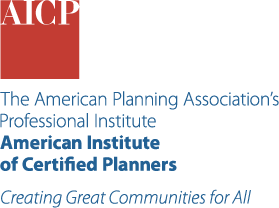Uncovering JAPA
Rethinking the First-Mile/Last-Mile Fix

How far is it from the bus stop to your doorstep? This gap between transit systems and destinations like home, work, and the grocery store is a lingering weakness in transit systems.
Planners hope to make transit travel more manageable by providing or encouraging options to bridge this gap, such as e-scooters, bikeshares, and rideshares. Collectively, these are known as first-mile/last-mile services.
This approach is generating excitement in the field of transit planning. Can it deliver the touted benefits of improved transit travel times and increased ridership? It is unclear if this popular solution is a fully effective model.
In "Panacea or Band-Aid? First-/Last-Mile Connection in Public Transit Systems" (Journal of the American Planning Association, Vol. 9,1, No. 2), Lingqian Hu and Robert J. Schneider highlight the limitations of first- and last-mile services. They caution against overenthusiasm by sharing interesting findings from a pilot program conducted in Milwaukee, Wisconsin.
First-mile/last-mile services aim to bridge transit network gaps, improve rider experience, increase transit ridership, and ultimately create more equitable and sustainable transportation systems.
Empirical studies on first-mile/last-mile services provide mixed results regarding their effectiveness. Some real-world pilot studies show reduced travel time and increased ridership, while others did not significantly benefit transit-dependent riders or increase ridership.
Regardless, the popularity and investment in first-mile/last-mile services have surged, raising questions about the prioritization of these services.
The authors ask: "Within the existing and growing number of options, should first-mile/last-mile services be prioritized in addressing the challenges faced by conventional transit services, especially for transit-dependent riders in low–to medium-density areas?"

Figure 1: FlexRide Milwaukee first-mile/last-mile service and neighborhood-based service. (Credit: Authors, Southeastern Wisconsin Regional Planning Commission)
FlexRide Milwaukee Pilot Program
The authors designed and experimented with a pilot program to connect inner-city workers with suburban jobs. FlexRide Milwaukee was funded by the National Science Foundation and supported by local businesses and organizations. The design of the pilot program was driven by user needs.
During the planning process, prospective riders quickly dismissed the first-mile/last-mile service design because it relies on existing, slow transit services for longer segments of their commute trips.
Black inner-city residents voiced safety concerns about waiting for pickups or walking in unfamiliar suburban neighborhoods, which reduced the attractiveness of first-mile/last-mile services.
Prospective riders proposed a neighborhood-based microtransit service that would directly connect their residential neighborhoods to suburban businesses. They acknowledged it would likely have higher service costs than first-mile/last-mile services. This revealed a clear preference for the service design.
The pilot program included both a first-mile/last-mile service and a neighborhood-based option. Riders overwhelmingly preferred the latter.
This finding aligns with research showing low usage of first-mile/last-mile services despite their conceptual appeal. This underscores the importance of considering rider preferences in the transportation planning process.
Three Considerations for Transit Planning
The authors propose three strategies for improving transit systems:
- Reframing the planning process to uplift underrepresented voices, particularly of existing and potential riders.
- Transit planning should center on the mobility needs of people more than on extending existing transit networks.
- Metropolitan regions should work across jurisdictional boundaries to make transit-supportive development decisions that create more efficient systems in the long run.
First-mile/last-mile services should be just one of many alternatives considered when improving transit systems. Instead of jumping immediately to promote the popular service to connect users, transportation planners should consider how the three strategies suggested can be used to create more equitable and efficient transit options in their communities.
KEY TAKEAWAYS
- Transit planning should uplift the underrepresented voices of existing and potential riders.
- Transit planning should center on the mobility needs of people more than on extending existing transit networks.
- Urban regions should work across jurisdictional boundaries to make more efficient transit systems.
Top image: Photo by iStock/Getty Images Plus/ StellaMc
ABOUT THE AUTHOR


